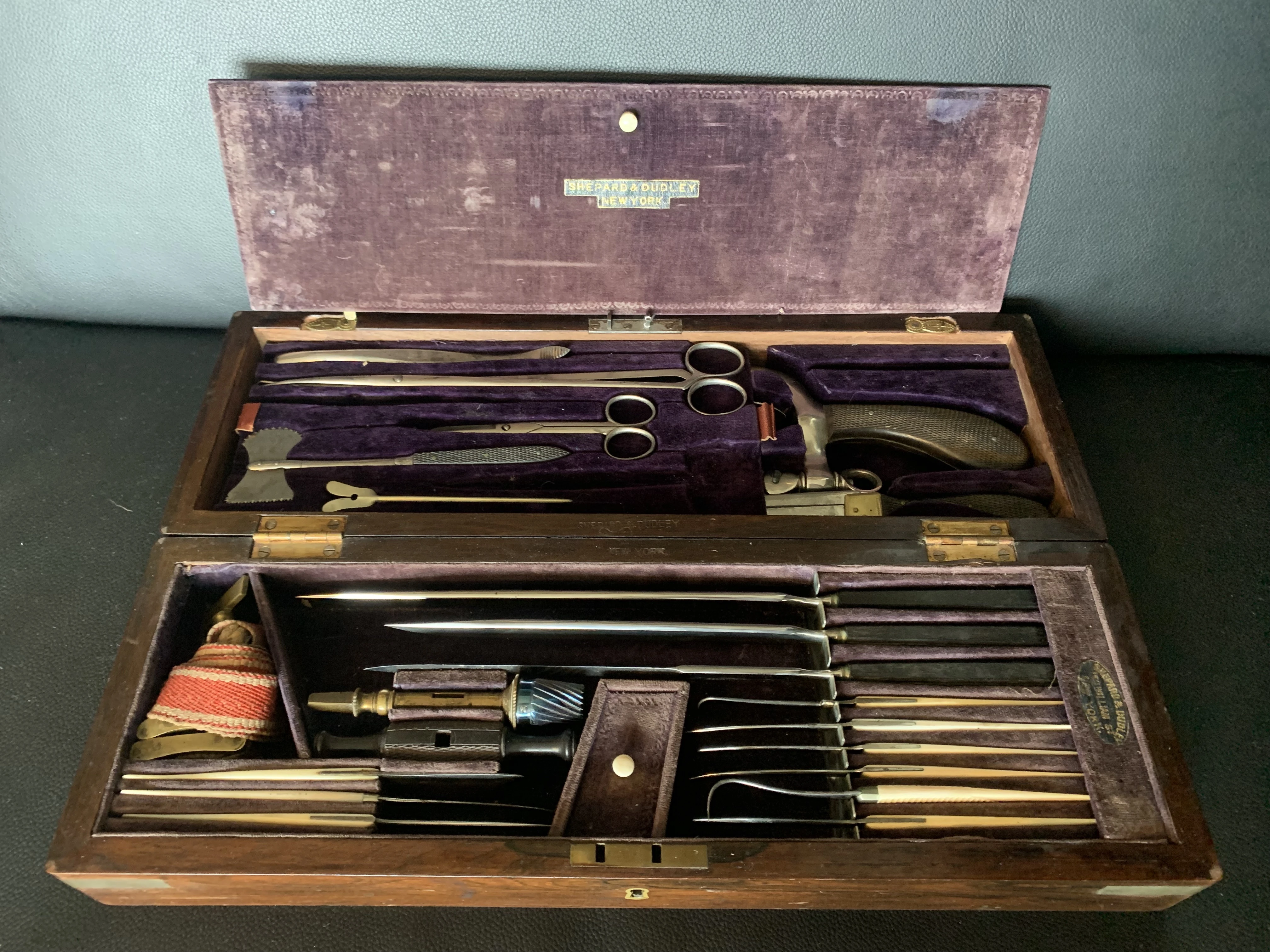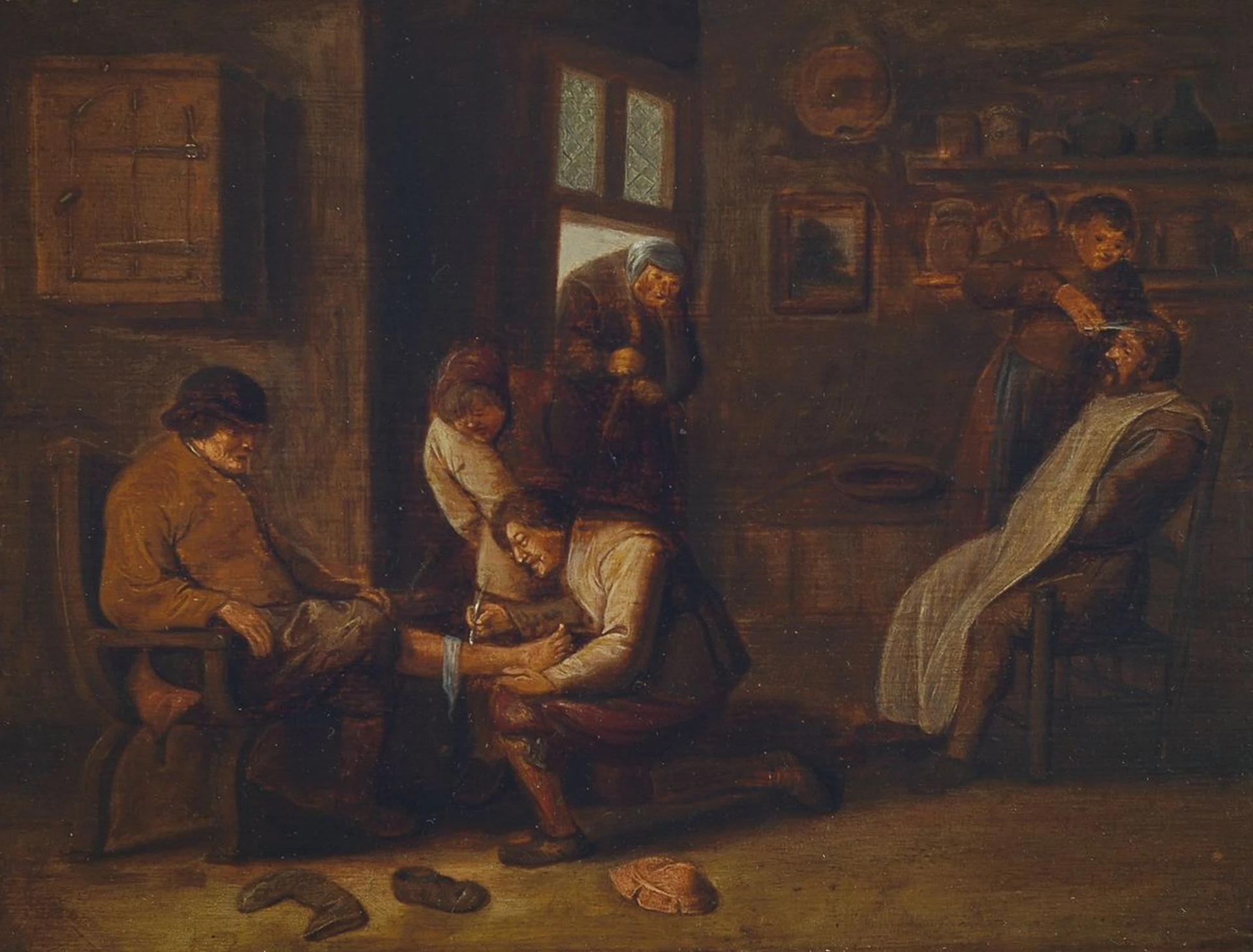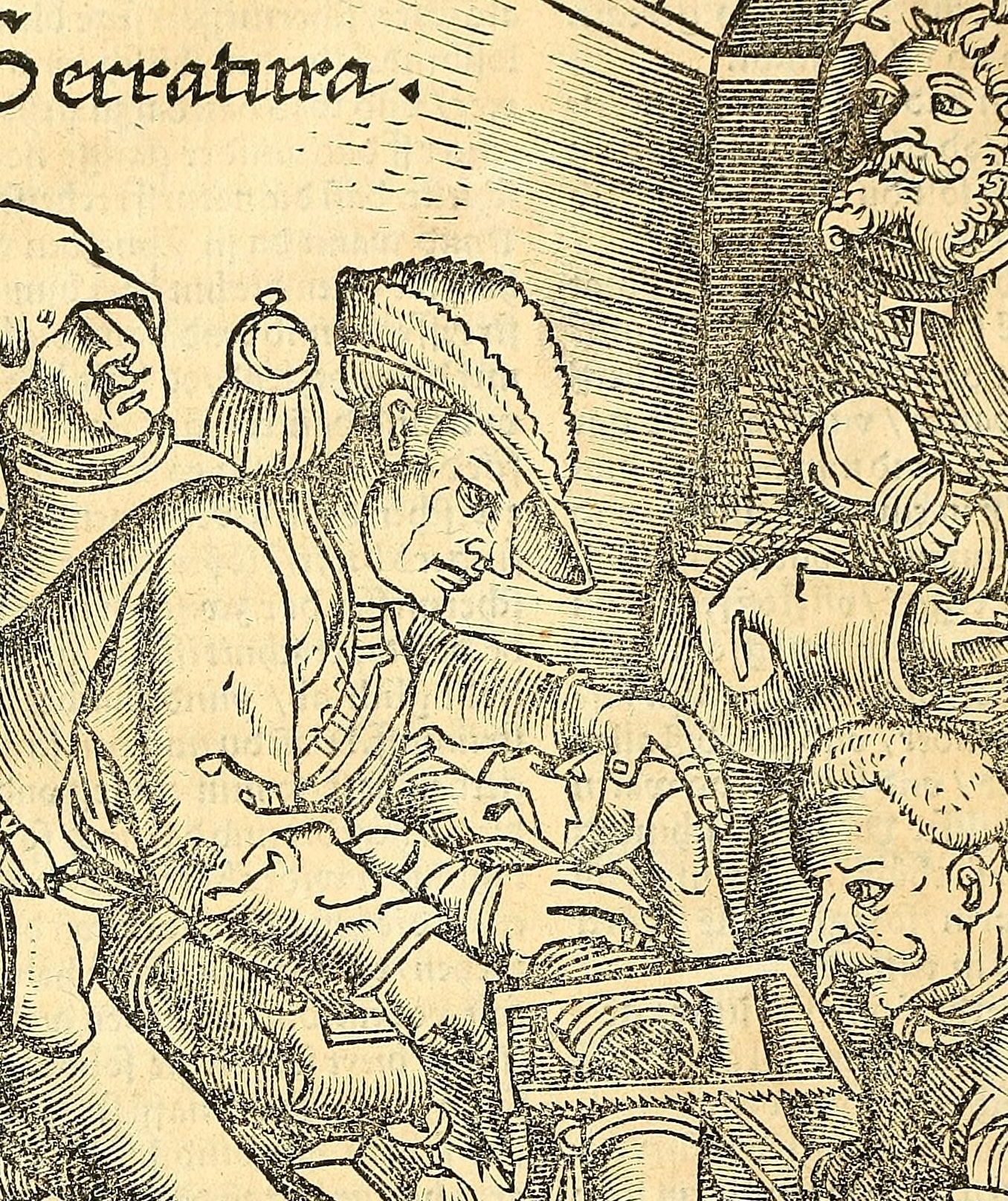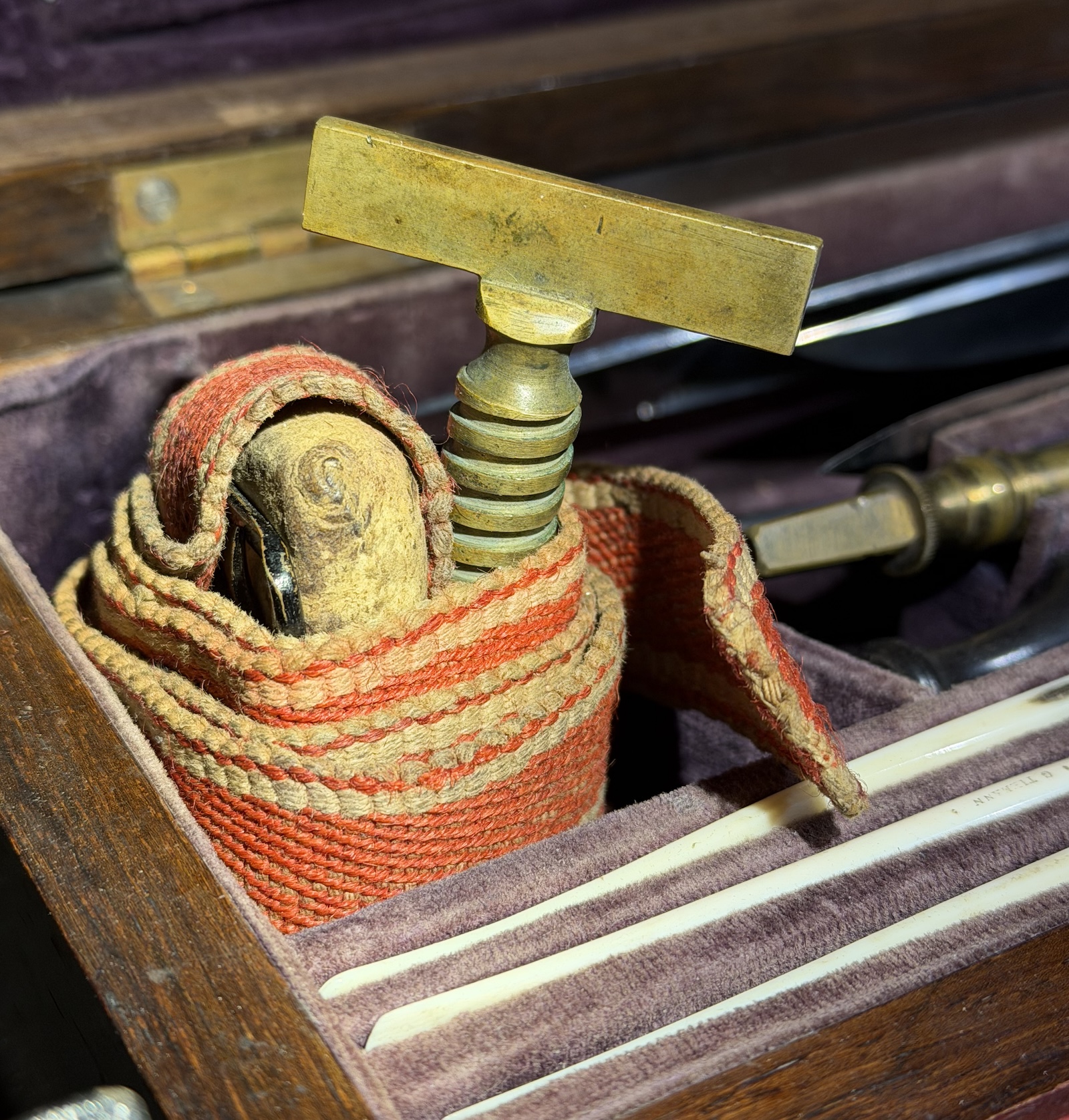Search results6 results
COLLECTION

France, 19 C. 2 half
The rare French amputation kit, 18 century, contains the typical instruments of a trauma and military surgeon, such as hand drills, trephine heads, amputation saw, brush to clean the operative field made by Collin / Charrière á Paris. The case has two compartments, has original key.

USA, 19 C. 2 half
American Amputation and trepanation cased set, by Shepard & Dudley NY, late XIX century. The wooden case contains the typical instruments of a trauma surgeon, such as amputation saw, trephine head with handle, screw tourniquet. The amputation saw and three amputation knives have ebony handles, the rest hand instruments like scalpels and hook have ivory handles. The case has two compartments lined with violet velvet. On the cover of the upper compartment, the inscription "SHEPARD & DUDLEY * NEW YORK".
GALLERY

Netherlands, 19 C. 2 half
Unknown dutch traditionalist, 19th century, genre scene: lively practice of a barber-surgeon, cutting hair and operating as a typical characterization of the common guildprofession in styles of the 16th/17th century, oil on wooden panel. Size: 25,0 x 33,0, with gilden frame 34,0 x 42,0 cm

Italy, 15 C. & before
da Vinci, Leonardo
Governo e cura degli infermi – The Care of the Sick or The Care and Governance of the Infirm is undoubtedly one of the most famous and oldest depictions of the hospital activities in the world. The fresco is one of six painted by the artist from Siena, Domenico di Bartolo (ca. 1400- ca. 1447). Studying this work will not only reproduce some of the hospital's rooms, but also give an insight into its daily life, which from the early fourteenth century was governed by strict statutes. In the middle there are the Rector and the oblats of the hospital. A surgeon is ready to perform wound care manipulation. To the left, representing physical medicine a carer places a patient on a stretcher, while two physicians discuss the results of an uroscopy. Below, in the centre, a servant washes a young man wounded in the thigh, preparing him for surgery. At right, on the other side, a monk confesses a sick man while two orderlies carry into the room a stretcher.
PEOPLE

Hans von Gersdorff (1455-1529) was a German surgeon and medical writer who lived during the 15th and early 16th centuries. He is best known for his military surgical experience and his influential medical manual, the Feldtbuch der Wundarzney (Field Book of Wound Medicine), which became one of the most widely used surgical textbooks in medieval Europe. His work played a crucial role in shaping the field of surgery, particularly in the treatment of battlefield injuries, amputations, and wound care.
Articles

The tourniquet is considered by many to be one of the most significant inventions in the history of surgery, having saved millions of soldiers and trauma victims. The earliest documented methods of blood control emerged in ancient India, as evidenced by Sushruta's ligatures, and referenced by Roman medici for vessel tying and cauterisation, in addition to external limb binding. Medieval and Renaissance barber-surgeons utilised tight bands, and in the 18th century, Jean-Louis Petit developed the screw tourniquet. The evolution of emergency care has been characterised by significant developments, with innovations ranging from Esmarch's elastic bandage to modern C-A-T devices.